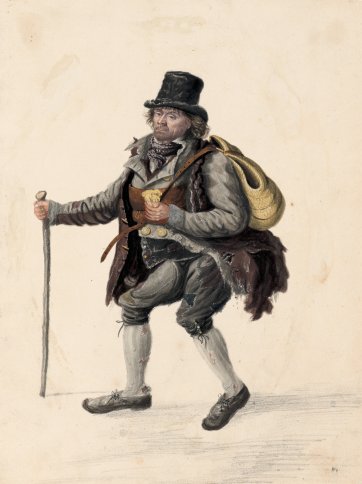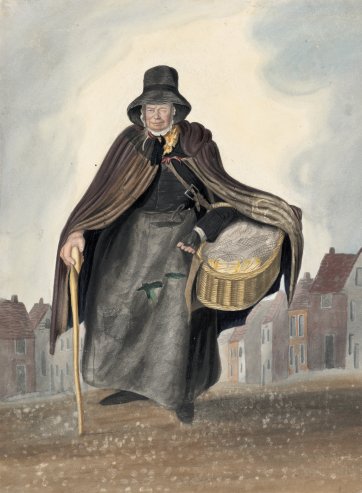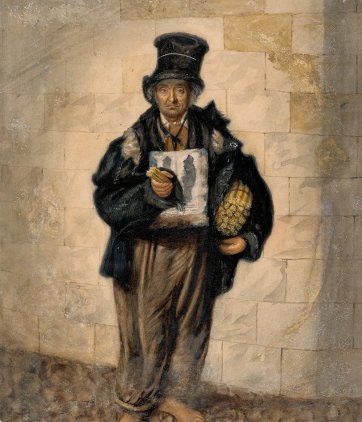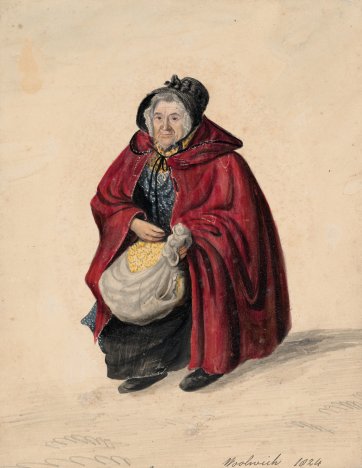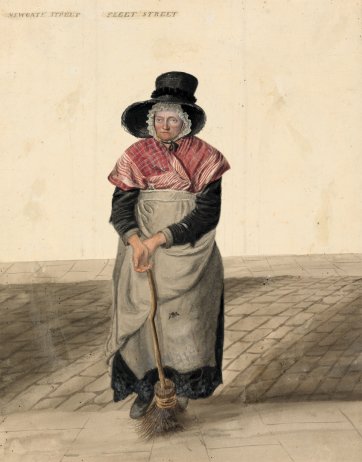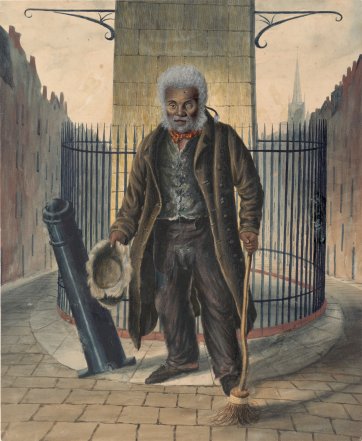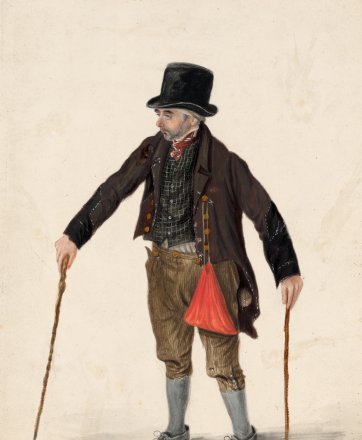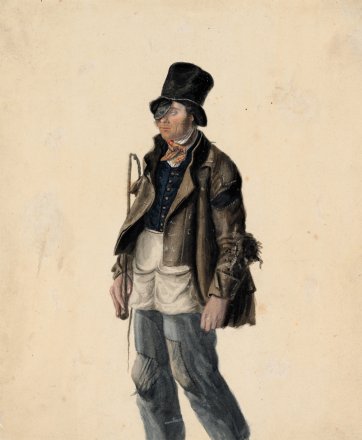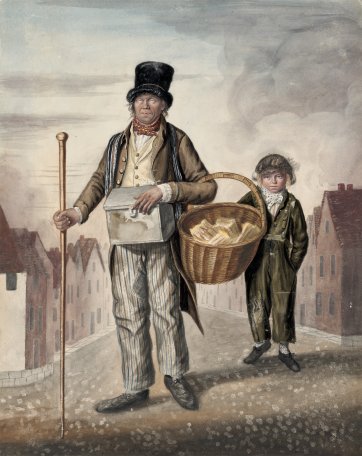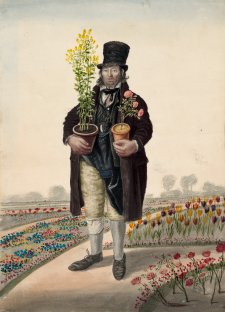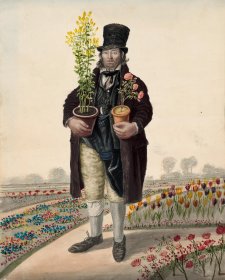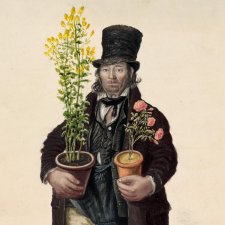The British Parliament’s Act for the Relief of the Poor of 1601 lasted (with amendments) for well over 200 years – until 1834. Under the so-called ‘Old Poor Law’, able-bodied people who were found begging on the streets could be arrested, whipped, placed in the stocks or confined in a House of Correction, and forcibly relocated to their home parish, their ‘place of settlement’. In order to avoid such stigma and punishment, the poorest of the poor often pretended to commerce, offering the most marginal of goods and services.
- About us
- Support the Gallery
- Venue hire
- Publications
- Research library
- Organisation chart
- Employment
- Contact us
- Make a booking
- Onsite programs
- Online programs
- School visit information
- Learning resources
- Little Darlings
- Professional learning
